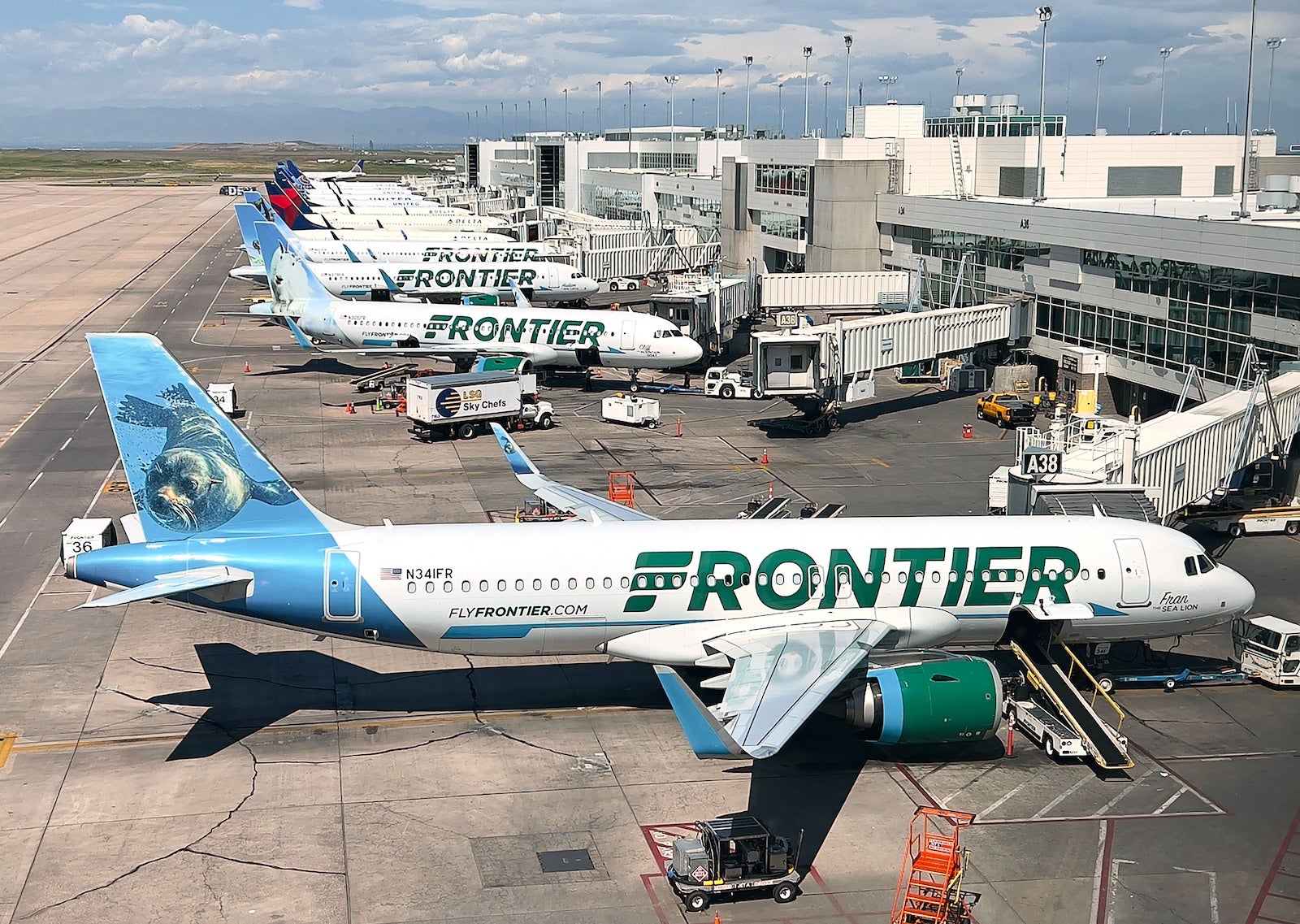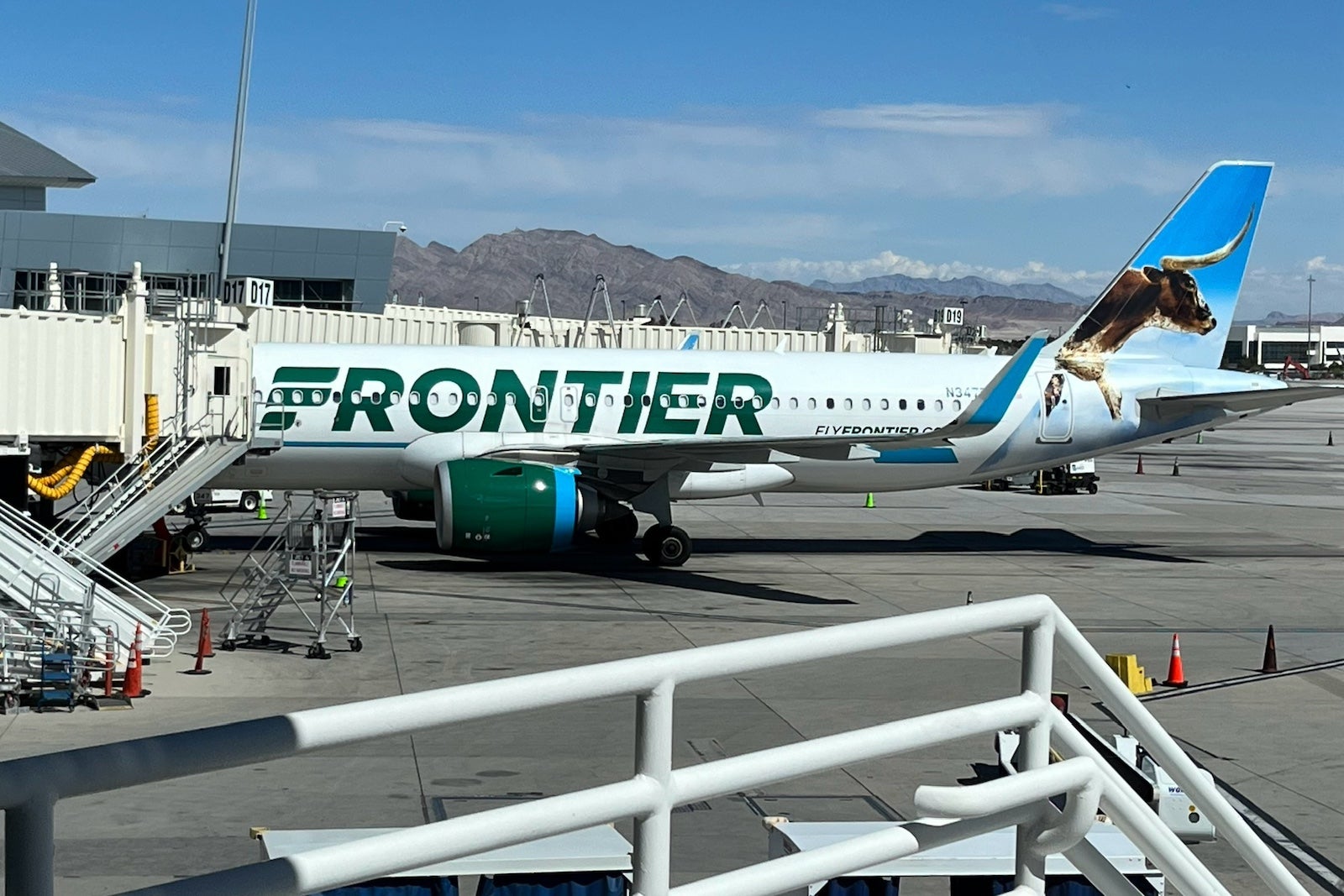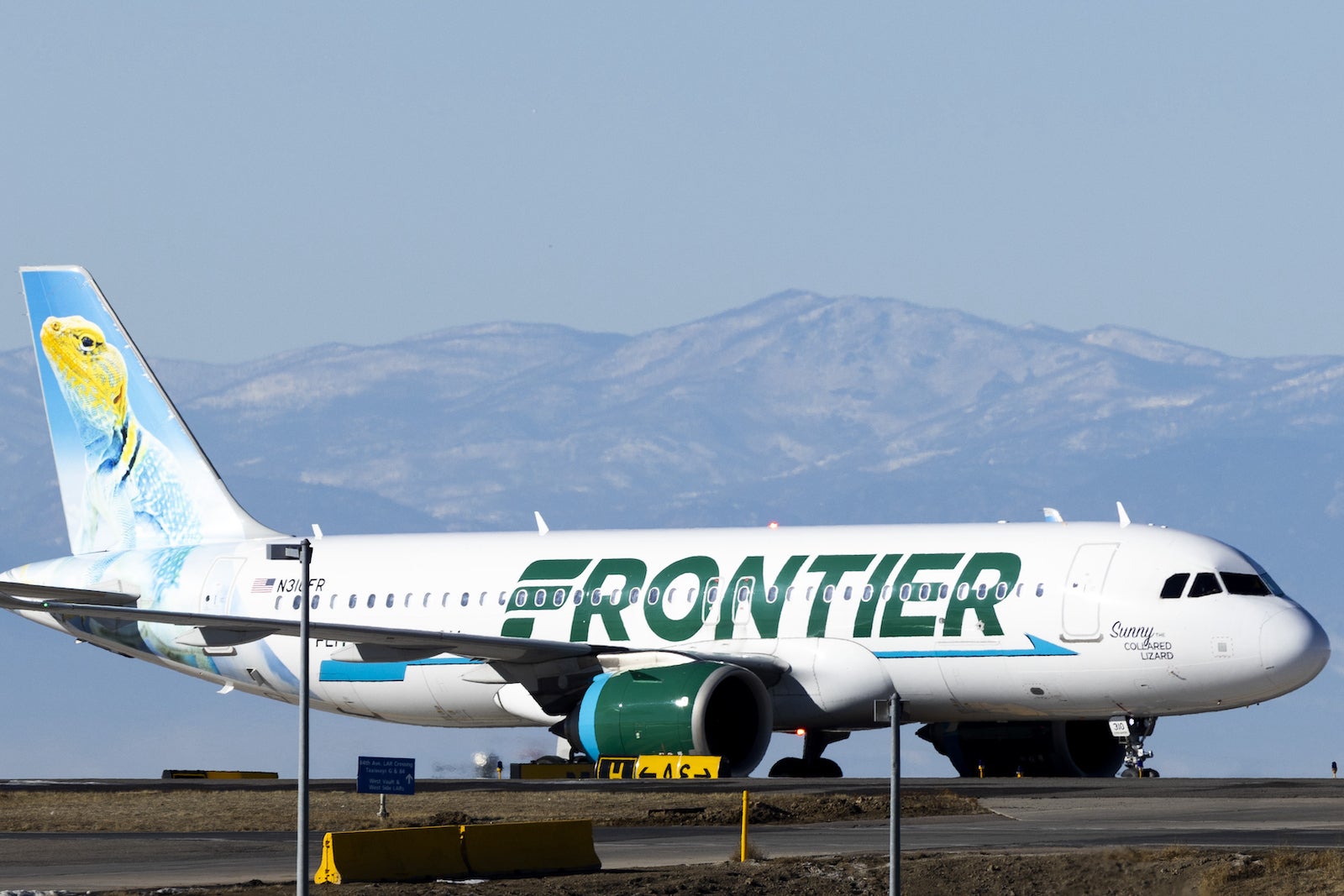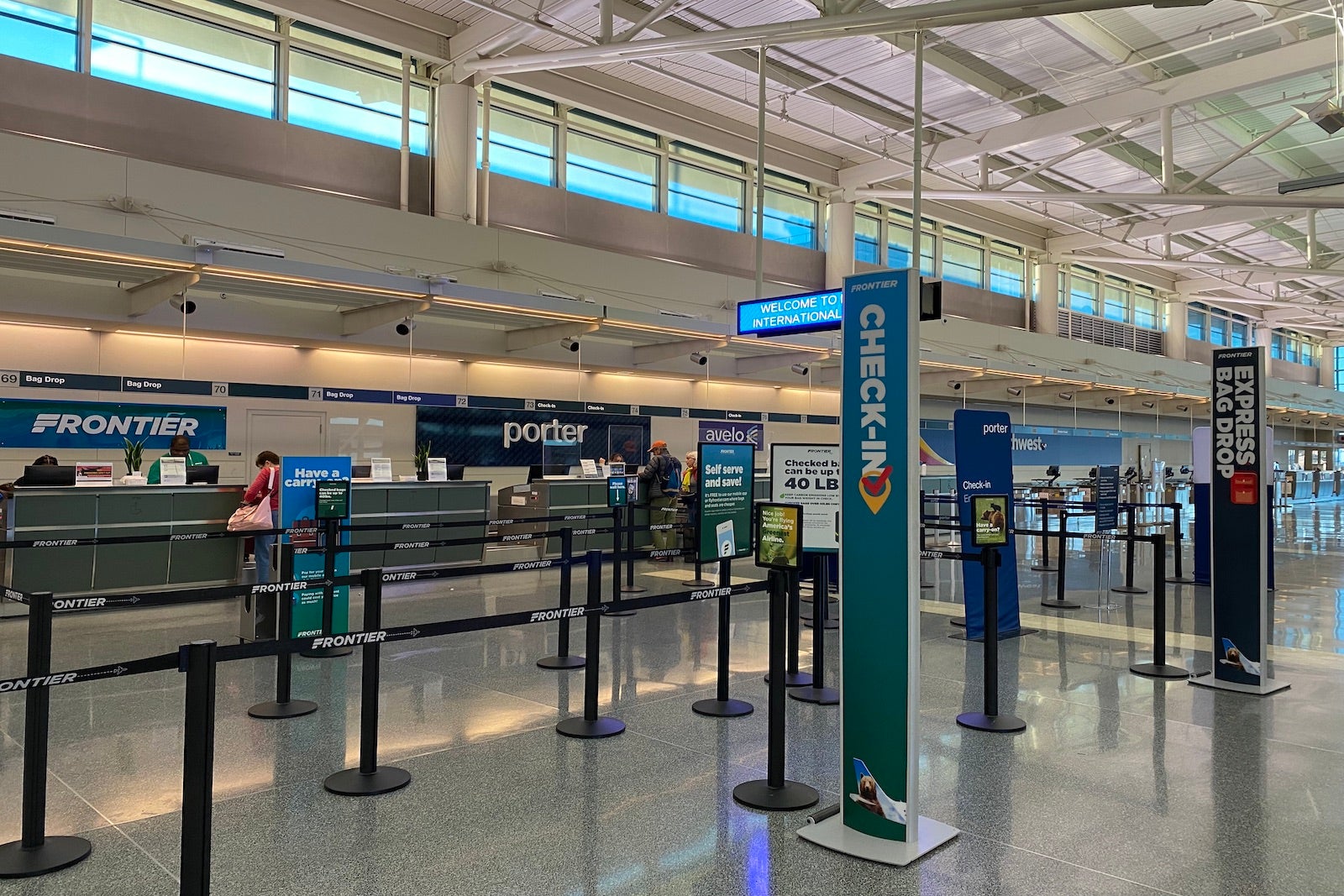It seems Frontier Airlines CEO Barry Biffle has heard enough criticism of the U.S. ultra-low-cost airline industry — even as the carrier projects more financial losses in the coming months and plans to reduce flights on certain days of the week and push back new aircraft deliveries by years.
Speaking to analysts last week, Biffle insisted the airline’s efforts to cut costs — a hallmark of the budget airline strategy — have Frontier well positioned for 2025 and beyond.
“Our cost advantage is real, it’s durable, it’s sustainable,” Biffle said during a conference call Thursday.
Biffle made the declaration with a confidence and a cadence evocative of one frequently used in recent months by United Airlines CEO Scott Kirby, although Biffle had a different take on the state of the ultra-low-cost carriers.
For many months, Kirby has boasted of United’s “structural, permanent and irreversible” advantage atop the U.S. industry (alongside Delta Air Lines). He’s also criticized the business models of budget airlines at the same time, as low-cost carriers have struggled to regain financial footing amid a demand for premium seats and international travel that’s strongly favored the larger network carriers.
That critique (echoed more subtly last month by Delta CEO Ed Bastian) has grown sharper as the U.S. airline industry has faced sagging domestic fares — and profits — in 2024, largely caused, according to airlines, by a surplus of flights flooding the industry with stiff competition, forcing major route shake-ups and seismic shifts in how some airlines do business.
“The pressure other U.S. airlines are feeling today is due in large part to their unprofitable flying in many domestic markets. It was always inevitable that carriers would begin to cancel this unprofitable flying,” Kirby told analysts last month in comments that were more measured than when he predicted some budget carriers’ demise while speaking on an industry podcast earlier this summer.
Biffle, in a seemingly defiant assessment of his own, deflected some blame for the industry’s challenges Thursday and argued that the larger carriers, too, have flooded the industry with flights, pushing down fares.
“We see several hundred routes for the high-cost carriers that are up at least 50% or more capacity versus 2019 … and I think there’s over 150 of them that the capacity’s more than doubled,” Biffle said. “Best way to stop losing money is to stop doing things that lose money.”

Daily Newsletter
Reward your inbox with the TPG Daily newsletter
Join over 700,000 readers for breaking news, in-depth guides and exclusive deals from TPG’s experts
Frontier’s challenges are profound
Of course, when it comes to money, Frontier has had its challenges of late.
Sure, the carrier was profitable in the second quarter of this year, but the second quarter is prime earnings season for all airlines. As such, it’s when many carriers hope to line their coffers ahead of other lower-demand parts of the year.
And 2024 has seen Frontier embark on a major top-to-bottom shake-up.
Network shake-up
The carrier’s network shift has been profound: 114 new routes have been announced since January, and dozens of others have been cut.
About a third of the airline’s new routes weren’t successful, executives revealed Thursday, including a bevy of flights added in and out of Louis Armstrong New Orleans International Airport (MSY). Executives argued this is consistent with historical trends.
2024 has seen the carrier open two new bases in Ohio, launch its first-ever service from New York’s John F. Kennedy International Airport (JFK), and focus more heavily on cities like Atlanta, Charlotte, Chicago and Dallas — hubs of the larger airlines — in an effort to reduce exposure to historically popular leisure destinations like Orlando and Las Vegas, where especially stiff competition has cut into airlines’ profits.
Commercial strategy overhauled
Frontier also overhauled how it displays ticket prices and add-on fees, offering customers four concrete bundles upfront — one of which comes with a seat style commonly seen in Europe when flying business class that features extra legroom and an empty middle seat.
Results of that move have “far exceeded” Frontier’s expectations, the airline said Thursday, while noting that success has been more a product of the carrier inspiring existing customers to “buy up” to a higher fare as opposed to attracting customers who frequent other airlines.
Cutting Tuesday and Wednesday flying
More changes will start unfolding as mid-August arrives. Frontier is slashing its flying on Tuesdays and Wednesdays and focusing on higher-demand days of the week. Fewer than 30% of the airline’s scheduled September seats will fly on off-peak days, executives revealed — down from around 40% a year ago.
“We looked at where we make money, and where we’ve been losing money,” Biffle said. “The midweek has been losing money.”
Losses expected
Frontier expects to lose more money in the third quarter, with predictions to be in the red by at least 3%.
And, as it tempers plans to grow its flight network for the foreseeable future, the carrier is pushing back deliveries of more than 50 Airbus jets beyond 2028 — about a third of the planes it expected to receive over the next four years.
CrowdStrike compensation sought
Frontier’s challenges also mean it has less of a financial ability to manage problems that arise outside of its control, like the recent CrowdStrike outage. Frontier expects it lost around $20 million during the episode, which affected several U.S. airlines and many industries around the world.
“You would expect that we would look to recover every penny,” Biffle said Thursday while noting the carrier’s new “out-and-back” flying strategy — which sees aircraft and crews leave and return to the same city each day — helped it recover quickly.
He added that that was a big reason why the carrier (seldom celebrated for its operational reliability) recovered far more quickly than the ordinarily dependable Delta Air Lines, which ended up in a five-day meltdown and now claims to be out around $500 million from the fiasco.
Frontier: ‘We’re well positioned for 2025 and beyond’
Yet the airline insists things are looking up.
Frontier recently reached its target of 80% out-and-back flying, which executives say is the key to cutting costs and running a more on-time operation.
Additionally, in news less welcome for consumers but good for the airlines and their shareholders, Biffle said September fares are trending up as sweeping network changes take hold across the U.S. airline industry; executives at several carriers have cited an August “inflection point” for fares.
Still, September fares are trending below 2023 levels, said Hayley Berg, lead economist at booking app Hopper — and that’s already amid a great time of year to score good travel deals as peak summer demand subsides.
Frontier also expects its recent introduction of a business-oriented travel product could help introduce the airline to more travelers beyond its historic leisure clientele.
Plus, to the extent recent volatility on Wall Street portends softness in the economy, Biffle argues Frontier could be in a prime position.
“Walmart, Costco [and] low-cost carriers win in recessions,” he told analysts.




